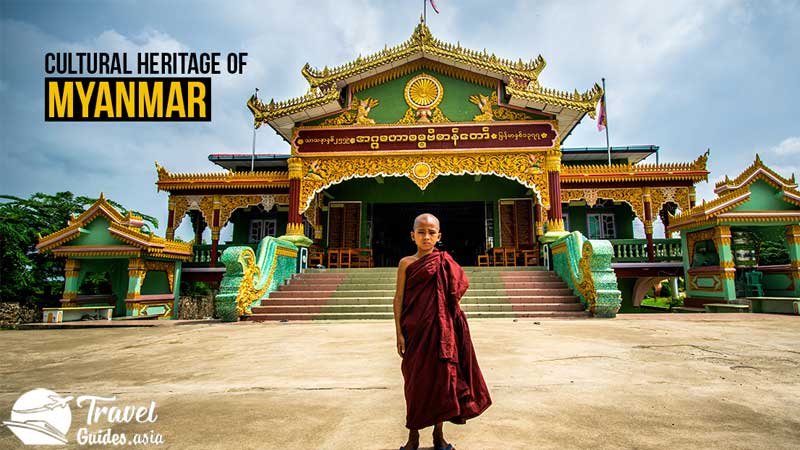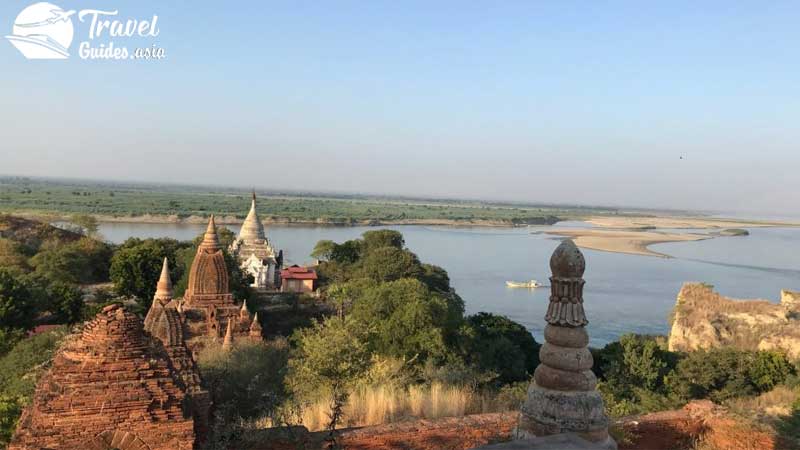Historical Roots and Burmese Heritage
Myanmar, a land steeped in ancient history, has been home to diverse civilizations for millennia. The Pyu, the first major civilization to settle in present-day Myanmar, arrived from southern China in the 2nd century BC. As Myanmar thrived as a crucial trade route between China and southern India, people from different regions intermingled, fostering cultural exchanges. The Pyu are credited with introducing Theravada Buddhism, which remains the predominant religion in Myanmar today.
In the 9th century, the Bamar people, part of the Bamar ethnic group, migrated to the Upper Irrawaddy Valley and established the Kingdom of Pagan in 1044. The Kingdom of Pagan flourished until the Mongol invasion in 1287, leaving behind a rich cultural legacy. During this era, Burmese culture, identity, and languages flourished, shaping the vibrant tapestry of Myanmar’s traditions.
Following the fall of Pagan, a period of fragmented city-states ensued, marked by frequent feuds and conflicts. The Taungoo Dynasty emerged in the 16th century, unifying the disparate states into a single nation. Eventually, the Konbaung Dynasty ascended to power and ruled over Mandalay, becoming the last Burmese Kingdom before British colonization.

British Rule and Independence
From 1824 to 1948, Myanmar was under British colonial rule, leaving a significant impact on the country’s development. Rangoon (now Yangon) witnessed infrastructural advancements and the establishment of administrative systems. The colonial legacy is evident in the country’s former name, Burma, derived from the Bamar people, the dominant ethnic group.
In 1948, Myanmar gained independence but soon faced internal conflicts and political challenges. The country experienced a civil war and endured a strict military regime from 1962 to 1988. However, pro-democracy movements gained momentum, culminating in the election of the first non-military leader in 2016. Despite the transition to democracy, Myanmar continues to grapple with internal issues and civil unrest.
Family Life and Gender Roles
Traditional Myanmar culture values respect for women, although their status has faced challenges during periods of male-dominated rule. With the advent of a free and democratic society, women have regained their influence and assumed significant roles in government, as exemplified by Nobel Peace Prize laureate Aung San Suu Kyi.
In Burmese family life, gender roles are less rigid and more egalitarian compared to many other societies. Both men and women work in the fields, with men often undertaking physically demanding tasks while women engage in activities such as weaving. Men also share domestic responsibilities, including cooking and childcare, alongside women. Myanmar stands out for granting women comparatively greater rights in Southeast Asia, contrasting with societies where male dominance prevails.

Religion and Belief Systems
Theravada Buddhism, a conservative branch of Buddhism, is the predominant religion in Myanmar, followed by over 90% of the population. It gained official status under the Kingdom of Pagan in 1044, shaping the country’s cultural landscape. Local inhabitants frequently visit temples and pagodas, offering prayers and tributes to various Buddha images, reflecting the deep-rooted religious practices that permeate Myanmar’s culture.
One of the most iconic sites in Myanmar is the Shwedagon Pagoda in Yangon, adorned with thousands of golden pagodas scattered throughout the country. When visiting religious areas, visitors must observe strict dress codes and remove their shoes as a sign of respect.
Christianity, particularly Protestantism, holds a significant presence in Myanmar, introduced by Portuguese missionaries in the 18th century. Islam is also practicedby a sizable portion of the population in Rakhine State, although it is currently marred by conflict.
Arts, Architecture, and Traditional Dress
Myanmar’s architecture showcases the country’s rich cultural heritage. Pagodas and temples exhibit distinct styles, with many tracing their origins to the adoption of Theravada Buddhism in the 11th century. The Kingdom of Pagan, in particular, commissioned the construction of numerous religious structures, showcasing the architectural prowess of the time. Intricate carvings grace wooden monasteries, adding to the allure of traditional Burmese architecture, which intertwines with religious symbolism.
Golden plating is a hallmark of Myanmar’s architectural landscape. From grand pagodas to remote stupas, the exteriors shimmer with golden hues, symbolizing the sacredness of these structures. The “Hti,” an inverted umbrella-like adornment atop pagodas, holds great significance and is often adorned with diamonds and precious stones. The Shwedagon Pagoda in Yangon, crowned by a magnificent 75-carat diamond, exemplifies the cultural and artistic splendor of Myanmar.
Yangon also boasts a remarkable collection of British colonial buildings. Constructed during the British colonial era, these architectural gems embody the fusion of Western and Eastern influences, representing an era of history that shaped Myanmar’s urban landscape.
Traditional attire in Myanmar centers around the “longyi,” a large cloth resembling a sarong. Both men and women don this versatile garment, with men tying it in a knot that hangs down, while women tuck it to the side. Longyis feature different patterns, with masculine ones often sporting simple checkered designs on dark-colored fabric. The longyi is a ubiquitous garment, worn for various occasions, from casual outings to formal settings.

Myanmar’s Culinary Delights
Myanmar’s cuisine reflects its diverse cultural influences, owing to its proximity to Indian, Thai, and Chinese culinary traditions, as well as the multitude of ethnic groups residing within its borders. Rice takes center stage as the staple food, typically served alongside fish or meat dishes and accompanied by a variety of vegetables. Fish-based preparations and sauces feature prominently in local cuisine. Noodles, both fried and in soups, are also popular, while curries are a regular feature of Burmese dining.
One iconic dish for visitors to try is the tealeaf salad, a delectable blend of shredded tea leaves, cabbage, nuts, peas, and tomatoes. Often enjoyed as a snack or side dish with rice, this salad can be found throughout the country, cherished by locals and visitors alike.
Traditional Celebrations and Festivals
Among the myriad festivals celebrated in Myanmar, Thingyan holds a prominent position. This New Year festival, usually occurring in April, sees the entire nation engaged in exuberant water fights. Reminiscent of Thailand’s Songkran festival, Thingyan involves days of revelry, with people joyously dousing each other with water as a symbolic act of cleansing and renewal.
Phaung Daw U, a grand festival held at Inle Lake, stands as another significant event, drawing crowds from far and wide. The festival showcases the vibrant customs and traditions of the Burmese people, as four golden Buddha images are paraded across the lake on elaborately decorated boats.
Immerse Yourself in Myanmar’s Cultural Mosaic
Myanmar’s rich culture, steeped in history and tradition, invites exploration and discovery. From ancient architectural marvels to diverse culinary offerings, from religious practices to festive celebrations, Myanmar captivates visitors with its enchanting tapestry of cultural heritage. Embark on a journey to this mystical Southeast Asian destination and experience the warmth, diversity, and charm of Myanmar’s vibrant cultural landscape.
